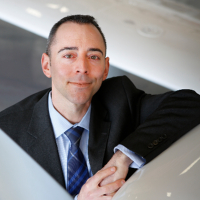Editor’s Note: Since this article was published, AOPA and other outfits have obtained Supplemental Type Certificates for many aircraft which were originally type certificated for 6 or 7 seats to limit them to 6 seats to comply with BasicMed. See article links below. For more information, please contact AOPA’s Pilot Information Center at 800-872-2672 x 2.
https://www.aopa.org/news-and-media/all-news/2018/june/15/aeronautix-offers-free-basicmed-stc-for-piper-pa-32s-and-pa-34s
https://www.aopa.org/news-and-media/all-news/2018/june/12/stc-makes-more-piper-pa32s-basicmed-compliant
https://www.faa.gov/documentLibrary/media/Advisory_Circular/AC_68-1A.pdf
https://www.faa.gov/licenses_certificates/airmen_certification/basic_med/media/basicmed_faq.pdf
Under Third Class Medical Reform, now known as BasicMed, pilots flying covered aircraft and meeting certain requirements will have the option of using BasicMed in lieu of a third class medical certificate. The new rules take effect May 1, 2017.
It is important to note that BasicMed is not limited to aircraft in the airplane category. Any aircraft that has a maximum certificated takeoff weight of 6,000 pounds or less and is not authorized by federal law to carry more than 6 occupants can be operated under BasicMed per § 61.113(i)(1). There are no limits on horsepower, number of engines, or gear type. However, compliance with the maximum occupant rule is not as simple as confirming the aircraft has 6 seats or fewer installed.
Some aircraft are authorized to have either 6, or more than 6 seats installed per the Type Certificate Data Sheet (TC). One example is the Piper Cherokee 6 (PA-32-300). The TC for this airplane authorizes it to have either 6 or 7 seats installed. Since it is authorized to have 7 occupants, it does not meet the BasicMed requirements, even if only 6 seats are presently installed.
The FAA does allow that an aircraft can receive a Supplemental Type Certificate (STC) or an Amended Type Certificate (ATC) to reduce the maximum number of authorized seats to 6 or fewer. See Advisory Circular 68-1. If the new design approval authorizes no more than 6 seats, then it will conform with the BasicMed requirements. Similarly, an aircraft that was originally certificated with a maximum certificated takeoff weight greater than 6,000 pounds can receive a new design approval authorizing a maximum certificated takeoff weight of 6,000 pounds or below.
Experimental aircraft may also be flown under BasicMed. Rather than having a TC, experimental aircraft are issued a Special Airworthiness Certificate. Nevertheless, the same restrictions apply. If the experimental aircraft was authorized with a maximum certificated takeoff weight above 6,000 pounds, the design approval would have to be modified to a maximum of 6,000 pounds or less before it could be flown under BasicMed.
BasicMed also restricts pilots to operating no faster than 250 KIAS and no higher than 18,000 feet MSL per § 61.113(i)(2). However, these restrictions do not relate to the operating limitations of the aircraft. It is permissible to fly an aircraft under BasicMed that is capable of flying faster and/or higher than those limits as long as the aircraft can be safely flown within them, and as long as the flight is conducted according to the regulations.
For more on the procedural and medical requirements of BasicMed, see AOPA’s pilot resources here.
Answers to Frequently Asked Questions on BasicMed are available here.

Chad Mayer
Legal Services Plan, Attorney
Chad Mayer is an in-house attorney with AOPA’s Legal Services Plan who assists Plan members with a wide variety of aviation-related legal issues. He is also a Commercial Pilot, a Remote Pilot with sUAS Rating, and an Advanced/Instrument Ground Instructor. The AOPA Legal Services plan is offered as part of AOPA’s Pilot Protection Services.






